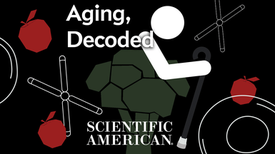Archaeologists studying one of the birthplaces of agriculture find a complex interplay between human actions and the workings of nature and genetics.
Did humans domesticate plants, or did they domesticate us?
While this provocative question might not be the way we learned about the history of agriculture in high school, it animates the current study of archaeology. What’s at stake is a matter of perspective—how we, as a species, see our place in nature and nature’s place in our own evolution.
There are few places on Earth where this question is more present than Çatalhöyük, an about 9,000-year-old site in Turkey that was one of the places where agriculture was invented. Archaeologist Ian Hodder has been excavating this ancient city for decades, and he cautions against simplistic narratives. He says that the traditional story of “human civilization,” where our ancestors learned to tame nature through breeding crops and livestock, creating a feedback loop of progress, lacks the nuance that modern science is uncovering.
Hodder calls the early interplay between humans and domesticated plants the “first entanglement,” which inspired the title of a short film about the secrets that Çatalhöyük is revealing. As a filmmaker, I am drawn to stories that make us rethink how we see the world. And in this early outpost of human habitation, we get a timely lesson in how major innovations such as agriculture can yield unexpected long-term consequences. The echoes for our current age of constant, rapid change are profound.
Those who study places like Çatalhöyük see a complex interplay between human actions and the workings of nature and genetics. Ceren Kabukçu, an archaeobotanist who researches ancient plant specimens, explains how a random mutation in wild wheat produced characteristics that pleased early farmers so much that they selected those plants over and over again until the mutated plants became domesticated. But it didn’t end there. The domesticated wheat evolved to such a degree that it could no longer reproduce without the aid of human hands. Much of what we eat today is rooted in this codependency.
Hodder calls this relationship between humans and plants an “entanglement.” And he says this, along with our desire to control the natural world, sealed our fate as a species that constantly seeks technological solutions for the problems it has created. Agriculture made feeding larger populations possible, but the work of sowing and harvesting crops was so challenging that it created a need for more labor, which in turn required new technologies to sustain these growing societies.
It’s an unending spiral that led us to our present age, where we’re deforesting the planet with mechanized farming in order to feed an exploding global population. We wonder what we can do to rehabilitate our suffering planet. Once again, our instinct is largely to turn to new technologies.
Our era is defined by anxiety over how we prepare for an uncertain future. Çatalhöyük teaches us that the long-term effects of our actions are unknowable. The people who first experimented with planting crops could never have imagined the forces of change they unleashed. We now live in the world they created. There is no going back, for good or bad. But as we seek to fix what’s broken, we should pause to consider the lessons from the past. And we should do so with humility over both the power we have to change the world and the limits of our imaginations.
The First Entanglement is a production of the Science Communication Lab. A partner with Scientific American, the Science Communication Lab is an innovative nonprofit organization dedicated to using multimedia storytelling to engage the public in the journey and wonder of science.








